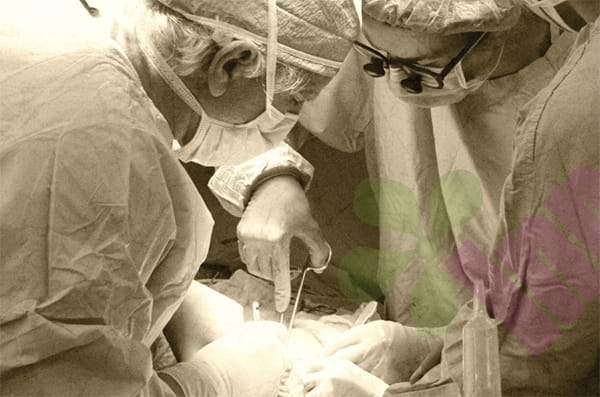People who are bedridden or wheelchair-bound often develop a distinctive reddening on their skin, known medically as erythema. This skin change appears as a single red patch, but it has a key characteristic: when pressed, the redness temporarily fades and turns white, then slowly returns upon release. This seemingly simple phenomenon is actually one of the earliest warning signs of a bedsore and requires significant attention.

Why does bleachable erythema occur?
Bleaching erythema is essentially the skin's reaction to sustained pressure. When a part of the body is under pressure for a long time, local blood circulation is affected. Blood vessels temporarily close under pressure, leading to tissue hypoxia. When the pressure is relieved, the blood vessels reopen and blood returns, resulting in a phenomenon of whitening when pressed and reddening again when released. This condition often occurs over bony protrusions, such as the coccyx, ankles, and hips, because these areas have less subcutaneous tissue and pressure is applied directly to the skin. The appearance of erythema indicates that local tissue has been damaged, but it is still in the reversible stage. If not intervened in time, it will quickly develop into a true pressure sore.
How can I tell bleachable erythema from other skin redness?
Generally, the first reaction is discoloration, which is the most critical distinguishing point. Other types of skin redness, such as allergies or infections, do not usually blanch when pressed. The second is the location of the occurrence. Erythema often appears in areas of pressure and is often symmetrical. The third is the development process. This type of erythema will gradually deepen with continued pressure and may temporarily alleviate after rest. Finally, there are the accompanying symptoms. Simple bleachable erythema usually does not cause obvious pain or fever. If these symptoms occur, it may indicate infection or deeper damage. Recording the time of appearance, location, and changes of the erythema is very helpful in determining its severity.
What should I do if I notice bleachable erythema?
Prevent erythema from developing into a true bedsore. The most important thing is to relieve pressure. Turning over every two hours is the basic requirement. You can use a special pressure-relieving pad or pillow to disperse the pressure. It is important to keep the skin clean and dry, but avoid using strong, irritating detergents. You can gently massage the area around the erythema to promote blood circulation, but do not massage the reddened area directly. Improve overall nutritional status, especially by ensuring adequate protein and vitamin intake. Use moisturizers to maintain the skin barrier function and prevent dryness and cracking. Monitor changes in erythema. If there is no sign of subsidence within 24 hours, intervention measures need to be strengthened. For high-risk groups such as diabetic patients, even mild erythema should be taken seriously.
What conditions indicate that the erythema may be worsening?
Bleaching erythema changes dynamically, and there are several warning signs to be aware of. First, the color change is characteristic. If it no longer turns white after pressure, it indicates that deeper damage may have occurred. The color of the erythema deepens, from pink to dark red or purple, indicating worsening circulatory disorders. The area expands, especially toward the periphery or deeper layers. Blisters appear, the skin temperature rises, or tenderness increases significantly. These changes indicate that tissue damage is progressing and may be developing into second- or third-degree pressure ulcers. Especially for patients with sensory impairment, who may not be aware of pain, caregivers must closely observe skin changes.
How to prevent bleachable erythema?
Preventive measures should start with risk identification. People who are bedridden for a long time, have difficulty in moving, are malnourished, have incontinence, and have sensory impairments are all at high risk. Using professional risk assessment tools, such as the Braden scale, can help determine the level of risk. Basic prevention includes regular changes in body position, at least once every two hours, and the use of an electric turning bed when necessary. Choose a suitable support surface, such as a foam pad, air mattress, or gel pad, to distribute pressure. Keep the skin clean and clean up sweat and excrement in time. Avoid friction and shear force, and lift rather than drag the patient when moving. Ensure adequate daily nutritional intake, especially protein, vitamin C, and zinc. Quitting smoking is also important, as smoking significantly reduces tissue oxygenation capacity. For home caregivers, receive professional guidance and master the correct care techniques.
When is professional medical intervention required?
Most bleaching erythemas can be reversed through standard care, but some cases require medical intervention. If the erythema persists for more than 24 hours, or expands and deepens in color. More serious signs of injury, such as skin damage, blisters, or exudate, appear. Accompanied by signs of infection such as fever, redness, swelling, heat, and pain. The patient has serious underlying diseases such as late-stage diabetes, vascular disease, etc. In these cases, evaluation by a wound specialist may be required, and special dressings or treatments may be used. For severe bedsores where tissue necrosis has occurred, debridement surgery or even skin grafting may be required. Seeking professional help early can avoid more serious complications.
For more information on Innomed® Silicone Foam Dressing, refer to the Previous Articles. If you have customized needs, you are welcome to contact us; You Wholeheartedly. At longterm medical, we transform this data by Innovating and Developing Products that Make Life easier for those who need loving care.
Editor: kiki Jia

 English
English عربى
عربى Español
Español русский
русский 中文简体
中文简体








